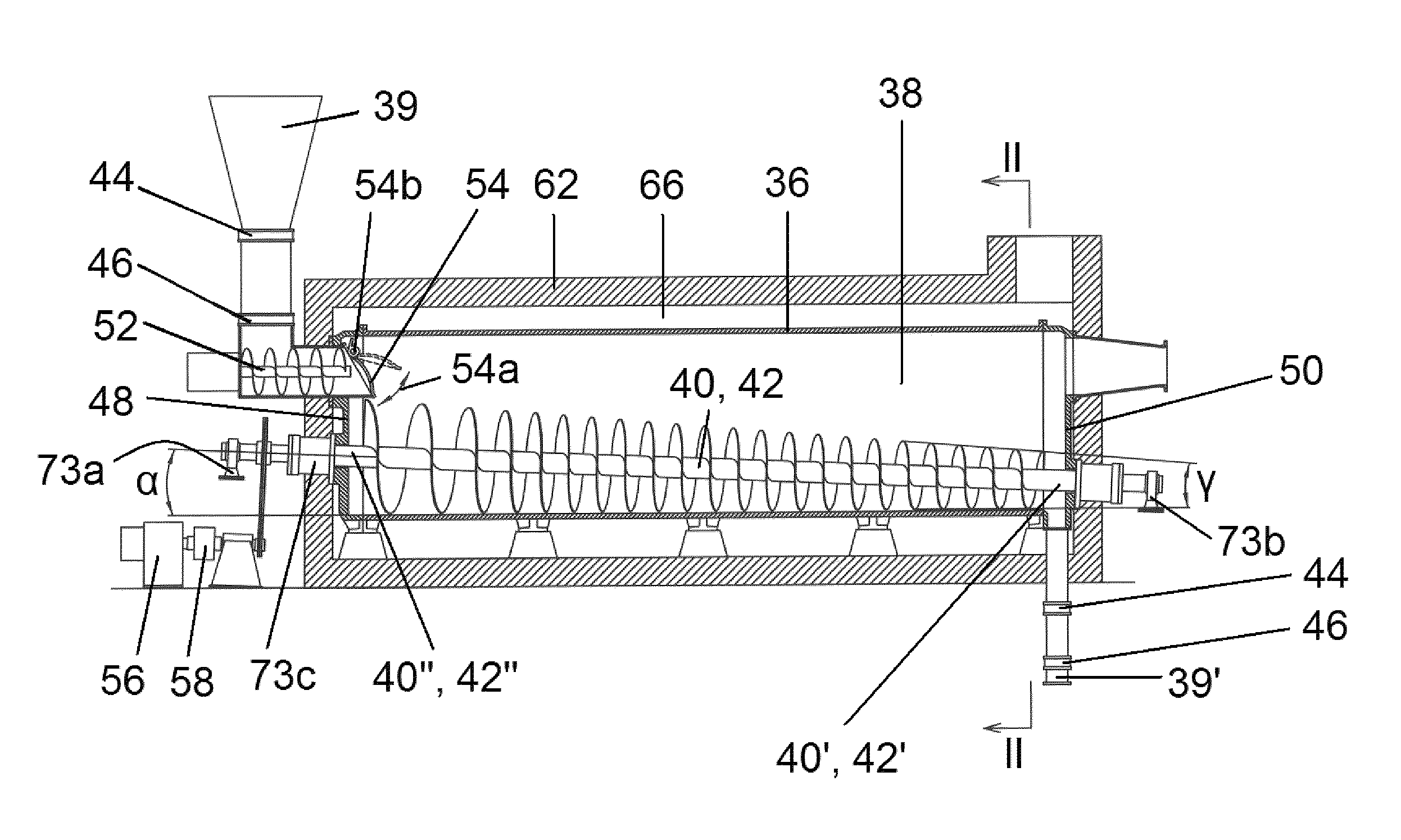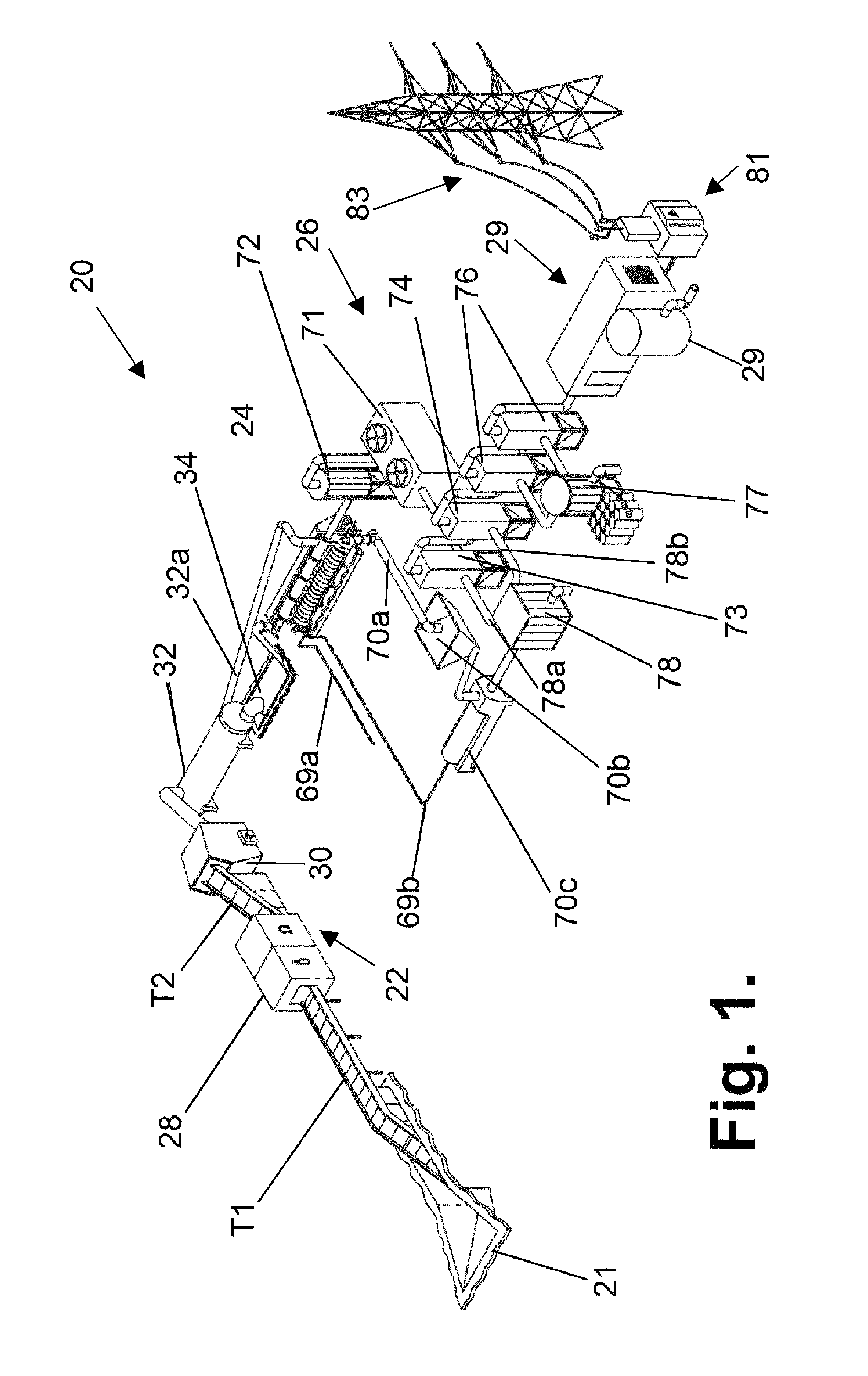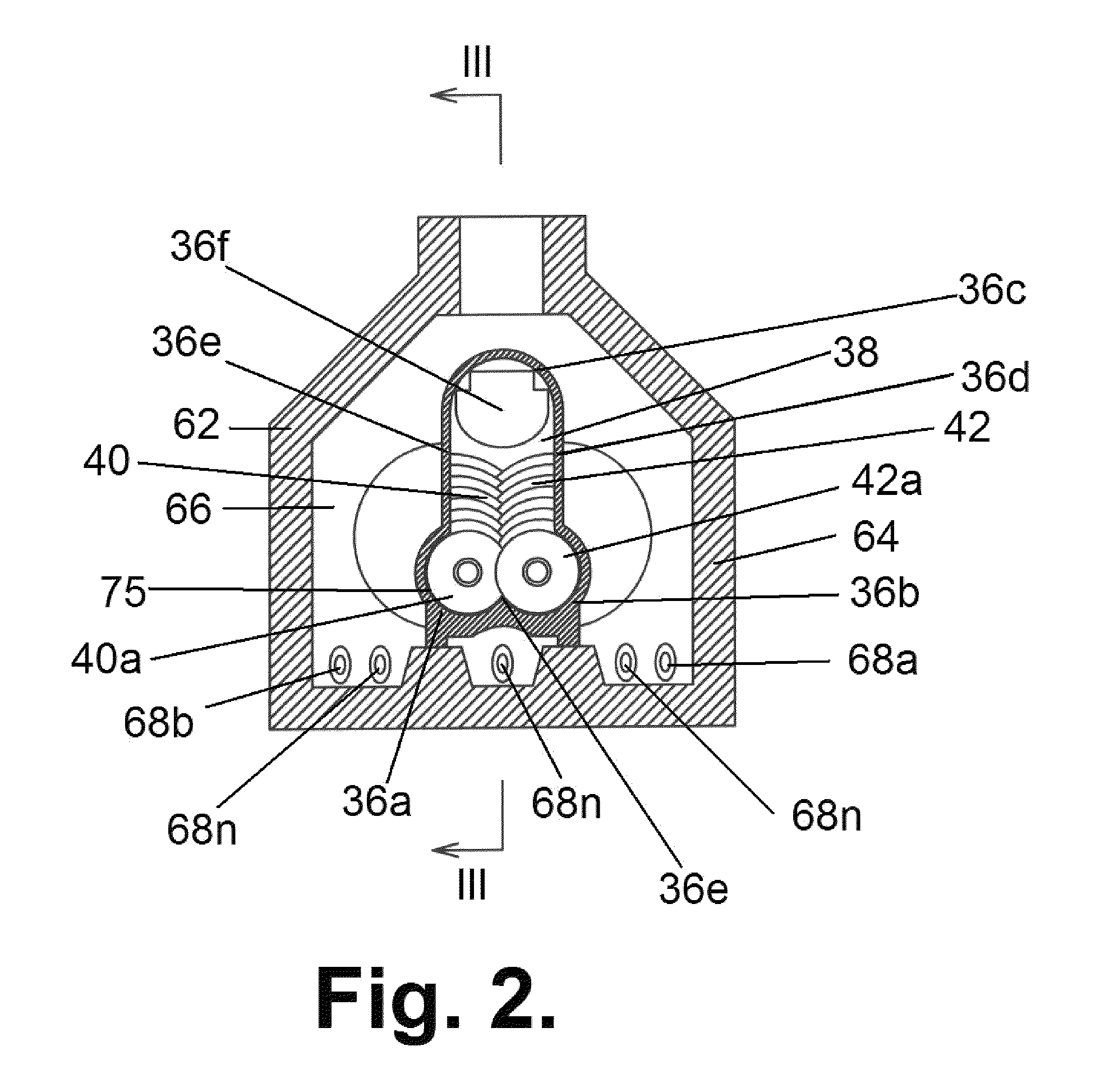Pyrolysis reactor for processing municipal wastes
a pyrolysis reactor and municipal waste technology, applied in the field of municipal and domestic waste treatment, can solve the problems of unburned chemicals, unburned chemicals, and contaminated ashes of incinerators, and achieve the effect of reducing the number of incinerators
- Summary
- Abstract
- Description
- Claims
- Application Information
AI Technical Summary
Benefits of technology
Problems solved by technology
Method used
Image
Examples
Embodiment Construction
[0044]As has been mentioned above, the invention relates to a reactor for processing and utilizing solid municipal and domestic wastes by pyrolytic treatment.
[0045]For better understanding the structure, principle of operation, specific features, and advantages of the pyrolysis reactor of the invention for processing of solid municipal and domestic wastes, it is worth considering the reactor within the entire waste processing system, since some products of other units of the system (such as syngas which partially may be used as a fuel, coke, which is sent for afterburning, etc.) are sent back to the reactor.
[0046]A block-diagram of the system of the invention for processing and utilizing solid municipal and domestic wastes by pyrolytic treatment is shown in FIG. 1.
[0047]The system, which as a whole is designated by reference numeral 20, comprises the following main modules connected in series: a waste pre-treatment and feed module 22, a pyrolysis reactor 24, a syngas cleaning module...
PUM
| Property | Measurement | Unit |
|---|---|---|
| taper angle | aaaaa | aaaaa |
| inclination angle | aaaaa | aaaaa |
| convergence angle | aaaaa | aaaaa |
Abstract
Description
Claims
Application Information
 Login to View More
Login to View More - R&D
- Intellectual Property
- Life Sciences
- Materials
- Tech Scout
- Unparalleled Data Quality
- Higher Quality Content
- 60% Fewer Hallucinations
Browse by: Latest US Patents, China's latest patents, Technical Efficacy Thesaurus, Application Domain, Technology Topic, Popular Technical Reports.
© 2025 PatSnap. All rights reserved.Legal|Privacy policy|Modern Slavery Act Transparency Statement|Sitemap|About US| Contact US: help@patsnap.com



